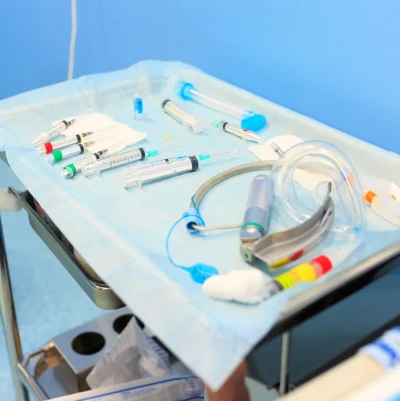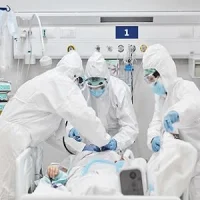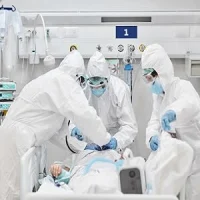Endotracheal intubation is often required for major surgical procedures and for respiratory support in critically ill patients. The ability to predict which patients have a high risk of difficult intubation may reduce the risk for “cannot intubate, cannot ventilate” scenarios. Several individual physical examination findings are predictive but do not reliably exclude the likelihood for a difficult intubation, according to a new systematic review published in JAMA.
The upper lip bite test was found to be the best bedside test for predicting difficult intubation. Other tests with modest accuracy include low hyomental distance, retrognathia, and impaired mandibular protrusion. The Wilson score was the most widely studied composite score and when the score was 2 or greater, it was predictive of a difficult intubation, the review team said.
Failure to predict and plan for a patient with a difficult airway is the most important factor contributing to the catastrophic “cannot intubate, cannot ventilate” scenario. Although this occurs in fewer than 1/5,000 elective general anaesthetic procedures and requires surgical airway rescue in fewer than 1/50,000 cases, these situations can result in major complications associated with long-term morbidity and account for 25% of anaesthesia-related deaths.
This systematic review was performed to identify patient history, clinical features, and bedside tests predictive for difficult intubation. MEDLINE and EMBASE databases were searched until June 2018, and the reference lists from the retrieved articles and previous reviews were searched for additional studies. Sixty-two studies with high (level 1-3) methodological quality that evaluated the accuracy of clinical findings for identifying difficult intubation were included in the analysis.
Among the 62 high-quality studies involving 33,559 patients, 10% (95% CI, 8.2%-12%) of patients were difficult to intubate. The physical examination findings that best predicted a difficult intubation was a grade of class 3 on the upper lip bite test (lower incisors cannot extend to reach the upper lip; positive likelihood ratio, 14 [95% CI, 8.9-22]; specificity, 0.96 [95% CI, 0.93-0.97]).
"Given the prevalence of a difficult intubation of 10%, the inability to bite the upper lip with the lower incisors raises the probability of experiencing a difficult intubation to more than 60%," the review team explained.
Other individual tests that could help predict which patients will have a difficult intubation include:
- Shorter hyomental distance (range of <3-5.5 cm; positive likelihood ratio, 6.4 [95% CI, 4.1-10]; specificity, 0.97 [95% CI, 0.94-0.98])
- Retrognathia (mandible measuring <9 cm from the angle of the jaw to the tip of the chin or subjectively short; positive likelihood ratio, 6.0 [95% CI, 3.1-11]; specificity, 0.98 [95% CI, 0.90-1.0])
- A combination of physical findings based on the Wilson score (positive likelihood ratio, 9.1 [95% CI, 5.1-16]; specificity, 0.95 [95% CI, 0.90-0.98])
- The widely used modified Mallampati score (≥3) had a positive likelihood ratio of 4.1 (95% CI, 3.0-5.6; specificity, 0.87 [95% CI, 0.81-0.91])
The reviewers noted that factors associated with difficult bag-mask ventilation or establishment of an emergent surgical airway were not included in this review.
Source: JAMA
Image Credit: iStock
References:
Detsky ME, Scales DC et al. (2019) Will This Patient Be Difficult to Intubate?: The Rational Clinical Examination Systematic Review. JAMA, 321(5):493-503 doi:10.1001/jama.2018.21413
Latest Articles
Respiratory, Intubation, Upper lip bite test
Endotracheal intubation is often required for major surgical procedures and for respiratory support in critically ill patients. The ability to predict whic...










